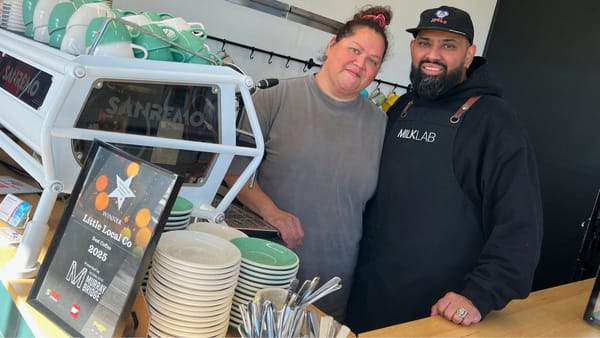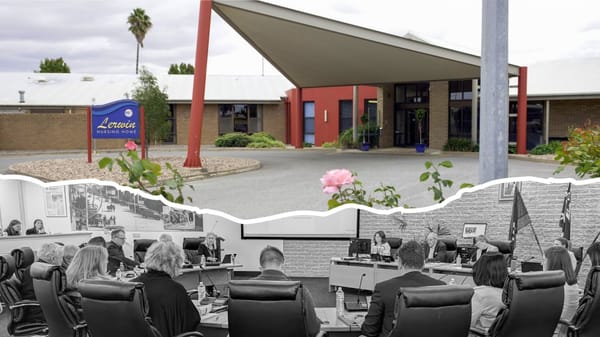Walk of the Month: Callington Heritage Trail and Bremer Boot Trail
Graham Hallandal takes you on a remarkably detailed tour of the mining town's history.

This post was contributed by Graham Hallandal.

This month we start the year with a look at historic Callington, with an emphasis on its mining history.
There are several starting points for cyclists and walkers of different fitness levels.
February has many cooler days, ideal for outdoor activities, but dress for warm weather with suitable clothing, footwear and hat and take ample water.
If you are a cyclist, your start location is in Murray Bridge, either at the Lavender Federation Trail’s Callington Spur Trail head, on Adelaide Road near the toilets, or at the Sturt Reserve trail information display adjacent to the regional rowing centre.
Off-road cyclists can follow the Callington Spur Trail markers.
The spur trail traverses Kinchina Conservation Park via the Jailbreak Trail, Lavender Federation Trail through Rocky Gully, and along the southern boundary of Monarto Safari Park.
A feature unique among Australian trails is the sight of animals such as giraffe and rare Mongolian wild horses.
Please take special note and obey the warning signs regarding approaching the zoo fence and electric fence.
Road cyclists can use the Old Princes Highway to Callington.

Fit walkers, your start location is at the top of Callington Hill on the Old Princes Highway.
Follow the Callington Spur Trail markers and, like off-road cyclists, enjoy the panoramic views of the Bremer Valley with the peak of Mount Barker in the distance.
Deviate from the marked trail at Cemetery Road, on the final approach into Callington township.
Many old graves of miners and early settlers can be seen at the graveyard.
For those undertaking the short walk, a drive to the cemetery – E18 on the map of Callington below – is worth taking.

Callington was founded in 1847.
It has retained many of its 19th-century buildings, many heritage-listed, allowing a unique glimpse into a mid-19th-century mining community.
It is Peramangk traditional land.
By 1847 there were already some farming settlers and people working small mineral lodes in the area.
Copper had already been discovered nearby at Kanmantoo.

In 1848 the Bremer Smelting Works (E21) was established, the first commercially viable smelter in Australia.
In 1849 copper was discovered at Callington by John Kiernan.
He received a reward of £50 from the Mining Claims Office, then equivalent to six months’ wages.
Also in 1849, a road from Balhannah to Wellington, passing though the site of a planned new township, was surveyed.
Blocks sold well in what was to become Callington, named after a copper mining town in Cornwall.
A new road, reliable water from the Bremer River, proximity to the new smelter and the discovery of copper led to the establishment of the Bremer Mine (W1).

By 1851 there were 17 mines in the area.
In 1864 about 250 were employed in the Bremer Mine, the adjacent smelter and in sourcing timber for its use.
Accounts in 1840 describe the area as well forested.
The demand for timber to keep the mine operational can be seen in the denuded landscape today.
Timber was being sourced from as far away as the current botanic gardens site in the Piccadilly Valley near Mount Lofty, 44 kilometres away.
The district’s population numbered around 600 in the late 1860s and there were three schools in the township, with girls outnumbering boys two to one because the boys were employed in the mines.
Callington was once far more extensive than it is today, as many of the outlying buildings have been demolished.
Enjoy your look at Callington as it is now, taking the time to appreciate what still exists from the past.

What follows is a description of the walk/ride commencing on the eastern, or Murray Bridge, side of the Bremer River, the blue dot on the map.
To your right and slightly behind you (E2) is the 1857 flour mill.
It remained largely unused for 120 years before being converted into a private residence.
Cross the stone and iron truss bridge, E1 on the map.

This is the fourth to span the Bremer River, with the current bridge opening in 1890.
Turn left into Hannam Street and you’ll see a 1960s miner’s cottage (W28) and a German-influenced cottage from 1852 at the far corner (W27) on your right, with the river on your left.
Turn right into Montefiore Street.
Over the road, on a vacant site, once stood the Wesleyan Methodist Church (W16) built in 1851, replaced by a larger structure in 1862 but demolished in the 1940s.
On the right as you proceed north is a miner’s cottage (W15) built in 1864, another from 1869 which was later a bakery (W14), and the site of the 1859 Tavistock Hotel (W13).


Turn left into Murray Street; on the left, on the corner, are Bill Phillips’ 1858 general store and residence (W12), the original Phillips general store from 1850 (W23), the 1923 postmaster’s residence (W22), 1921 post office (W21) and, on the corner of Baker Street, the 1884 St Peter’s Lutheran Church (W19).
Backtrack to Montefiore Street with miners’ cottages (W20) to the left built between 1863 and 1866 and turn left.
The four buildings to the right (W8 to W10) are all miners’ cottages built in the 1850s and 60s.

On the left was the Town and Country Bank (W7) which operated from 1859 until 1870.
Original flagstones still exist on the veranda and in the kitchen.
On the corner of North Terrace is the Callington Hotel (W5), originally called the Callington Arms, built in 1850 and currently undergoing renovation.
Proceed along Callington Road to the entrance of the recreation grounds.

The next section, the Bremer Boot Trail, gets its name from blocks of slag that have boot imprint marks in relief: that is, negatives of boot impressions so detailed that some show the hobnails on the underside of the boots.
Follow the yellow posts from the entrance.
Location two is the Recreation Community Centre.
Public toilets are located nearby.
Location three is the site of the second Bremer Smelting Works, built in 1860, which continued in use until 1875.
At location four, if you face the Bremer River and look down the side of the slag heap you are standing on, look for the imprints of the early miners’ boots.
The middle of the heap was removed to build sections of the Princes Highway.
Location five overlooks the Bremer River.
Starting near Harrogate, it enters Lake Alexandrina near Lake Plains.
Keep following the track back to location one and cross Callington Road to the community walk and nature garden.
The garden is a Kanmantoo-Callington Landcare project.
This is the end of the walk and ride.
Thank you to the Rural City of Murray Bridge, the information brochure Callington: A Brief History and Heritage Trail, the Landcare group, Harry Seager and George McKay for their assistance with this feature.

You can help keep local features like this one free for everyone to read. Subscribe to Murray Bridge News today and support your independent, locally owned news service, plus get access to exclusive stories you won’t find anywhere else, from just $5 a month.




